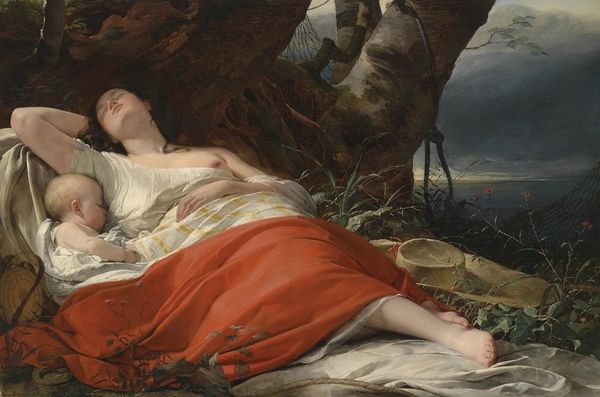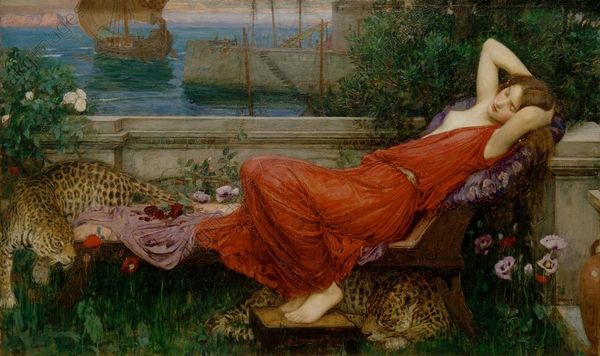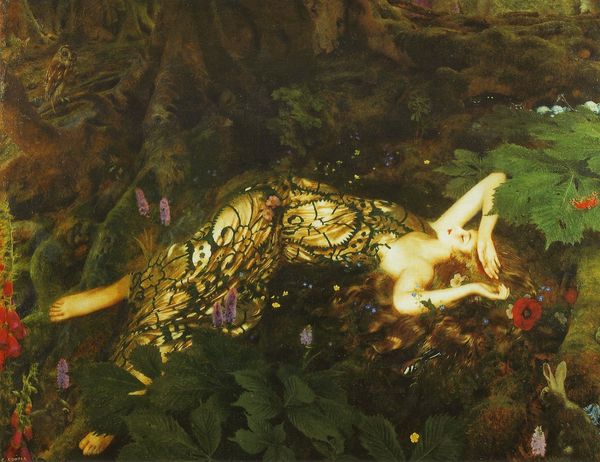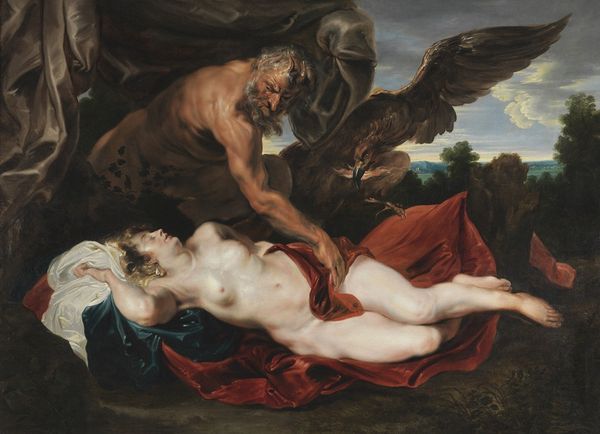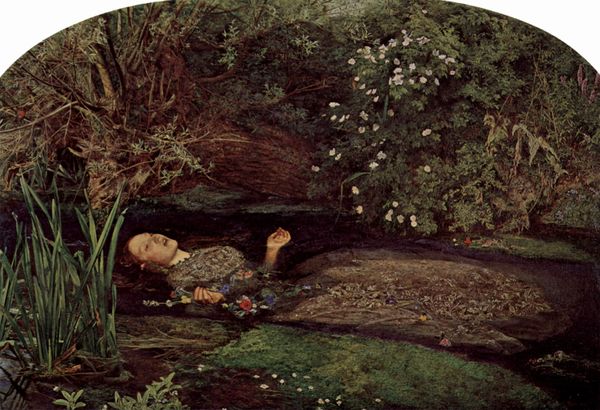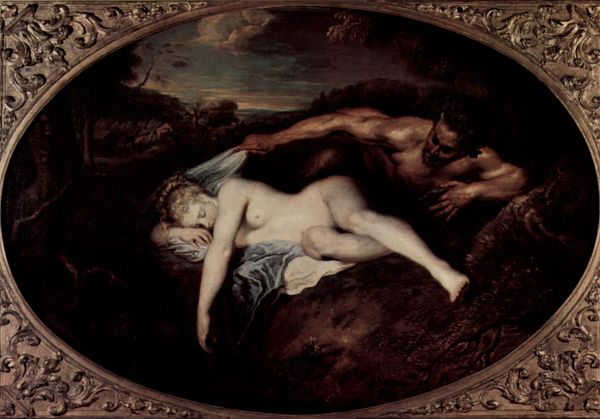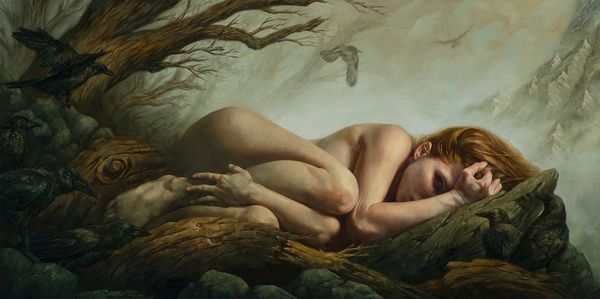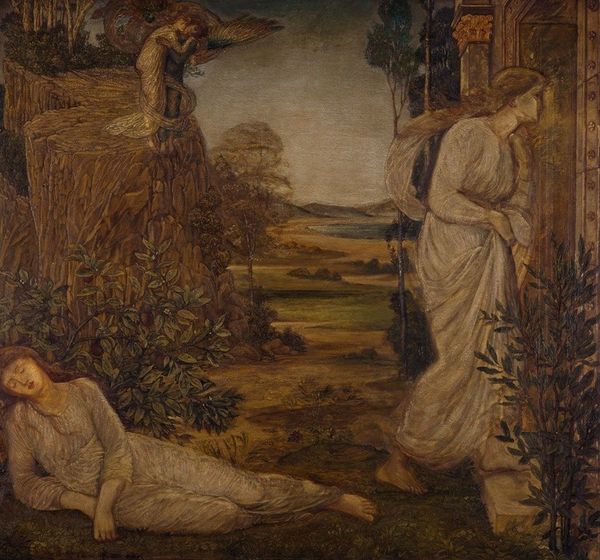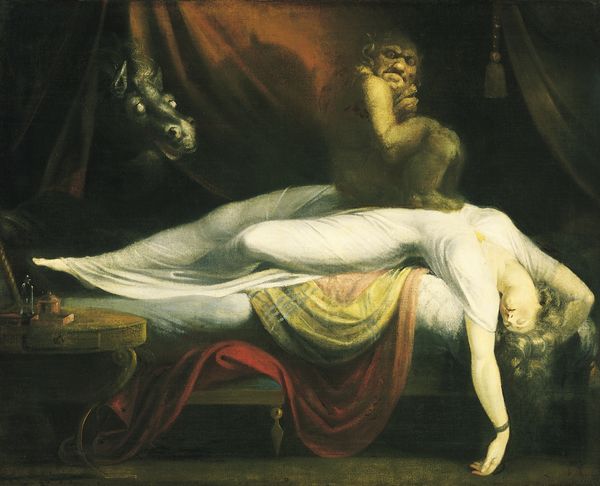
Copyright: Public Domain: Artvee
Editor: Böcklin’s “Sleeping Diana Watched by Two Fauns,” painted between 1877 and 1885. It’s striking – the contrast between the vulnerable sleeping figure and the intense, almost predatory gaze of the fauns creates such an unsettling atmosphere. What underlying messages do you see embedded within this scene? Curator: The imagery speaks volumes. Diana, the Roman goddess of the hunt and moon, is shown here disarmed, vulnerable in sleep. Consider what sleep represents, psychologically - a temporary surrender of control. Böcklin juxtaposes this vulnerability with the raw, untamed energy of the fauns, figures deeply connected to the wilderness. The forest itself is dark, primeval, a landscape often associated with the unconscious. Don’t you feel the pull between civilization, embodied by Diana, and the instinctive nature represented by the fauns? Editor: Yes, I see it! The tension is palpable. Are you suggesting Böcklin is using Diana to symbolize something beyond just the goddess herself? Curator: Absolutely. Diana often stood for female virtue and chastity. To see her sleeping, observed, arguably invaded upon by primal forces reflects anxieties surrounding female sexuality and vulnerability. And the fauns themselves aren’t merely bestial; they possess a gaze, an awareness. They’re looking, assessing. This is Böcklin exploring complex societal anxieties regarding repressed desires and the allure, even threat, of untamed nature. Consider the red shoes Diana is wearing: does it appear odd, or is it meant to signal something deeper about her personality? Editor: I hadn't considered it, but the red shoes do feel deliberate, almost a splash of… defiance? It challenges the pure goddess image. Curator: Precisely! Böcklin layers meaning. It isn’t simply a depiction of a mythological scene. It's a symbolic exploration of the human psyche and the conflicts between our conscious and unconscious selves, wrapped in classical trappings. Editor: I’m beginning to understand the symbolic weight of this image and appreciate Böcklin's intention with this artwork. Curator: It's in recognizing those symbols and considering their cultural weight that we truly unlock the richness of art like this.
Comments
No comments
Be the first to comment and join the conversation on the ultimate creative platform.
